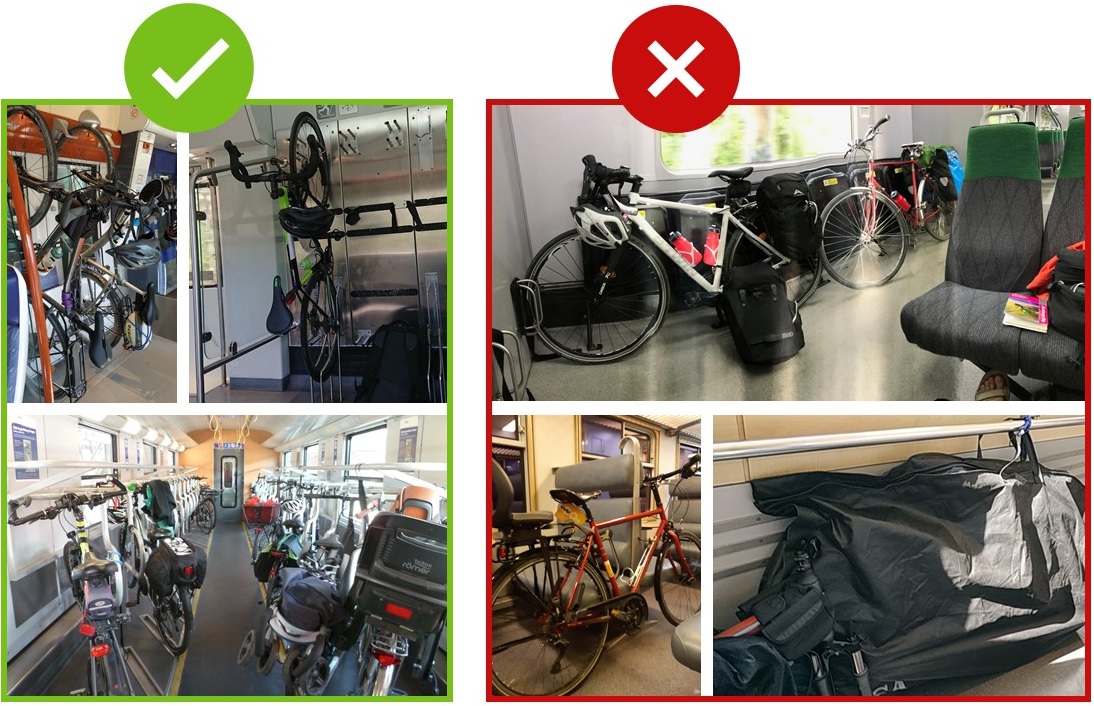
Cycle-tourism combined with train: How did it go this Summer?
September is here and Summer holidays are behind us. As every year, cyclists took over the roads to discover their countries or to travel abroad, many of them opting for the bicycle&train combination. But this summer was not a usual one, with the COVID19 impacting the way we travel. Passengers in train are at record low while the number of people cycling set a record. How did it translate this summer? Did the train & bike combo create a winning team or a losing one?
A huge demand for bicycle carriage – how did rail operators face it?
The number of cyclists has never been so high while the rail transport is putting big efforts in place to reconquer its passengers since the beginning of the pandemic. Very positive on paper, the reality is much more complicated and brings to light recurrent issues that needs to be solved – permanently.
In Belgium, SNCB/NMBS put in place several measures to encourage and facilitate trips by Belgian trains at the beginning of the summer - among them, the carriage of bicycle for free. As a result of this initiative, Belgian trains registered an 80% increase of bicycles carriage in June, compared to 2019. Not being able to handle the situation, SNCB/NMBS decided to go backwards, removing this free option for assembled bicycles and letting-in only for foldable ones.
A very similar situation occurred in Italy, with Trenord operating trains in Lombardy region and banning bicycles on board once the demand became too high. Italians complained and managed to change the operator’s approach completely: Trenord finally added a dedicated coach for 60-100 bicycles on specific routes. This is a positive news, knowing that 32% of cyclists uses the train in combination with their bike during their vacations, according to the 940 cyclists surveyed for a study carried out by FIAB and the University of Insubria. These two examples are just a tiny sample of the issues that occurred this summer and every year, in many European countries.
Cyclists travelled all-around Europe via train this summer – what was their experience?

Pictures received from Belgium, France, Spain, England and Austria, in response to ECF call on Social medias: “Share your experience withing bike & train” | ©BiciFan_dra; ©BiciFandra; ©cdamian; ©chris_brand ; ©FrederikDepoor1; ©novo_velo
This summer, in the frame of #TrainsForCyclists campaign, ECF asked "#Trainsclists"about their experience with bike&train multimodal trips, and it clearly appears that big disparities exist in Europe. Countries like Austria, Germany and Switzerland seem to offer very good intermodal options. Combining train and bicycle is most of the time feasible, convenient, and easy. In other countries like Italy, France or the United Kingdom, the situation highly differs from one train to the other. A recurrent issue in summer, is that even when feasible to carry a bicycle, the number of available places is not enough compare to the number of cyclists. This led to chaotic situations with passengers waiting for hours to be able to board with their bike. Travelling via long distance trains and high-speed also get complicated as often bicycles must be dismantled.
Rail operators need to face the fact that the demand for bicycle-train combination keeps increasing and rolling stocks should be adapted accordingly. Some operators are already doing it and enjoying the economic and social benefits of it.
The European Parliament and ECF ask for a minimum of 8 dedicated spaces for assembled bicycles in all new and refurbished trains in Europe. This should be specifically mentioned in the Rail Passenger Right Regulation and Obligation, being currently updated.
Picture credit: PKP Intercity
Regions:
Topics:
Contact the author
Recent news!
Upcoming events
Contact Us
Avenue des Arts, 7-8
Postal address: Rue de la Charité, 22
1210 Brussels, Belgium









